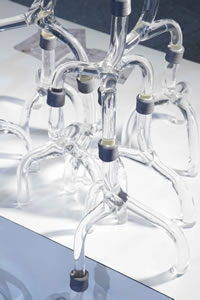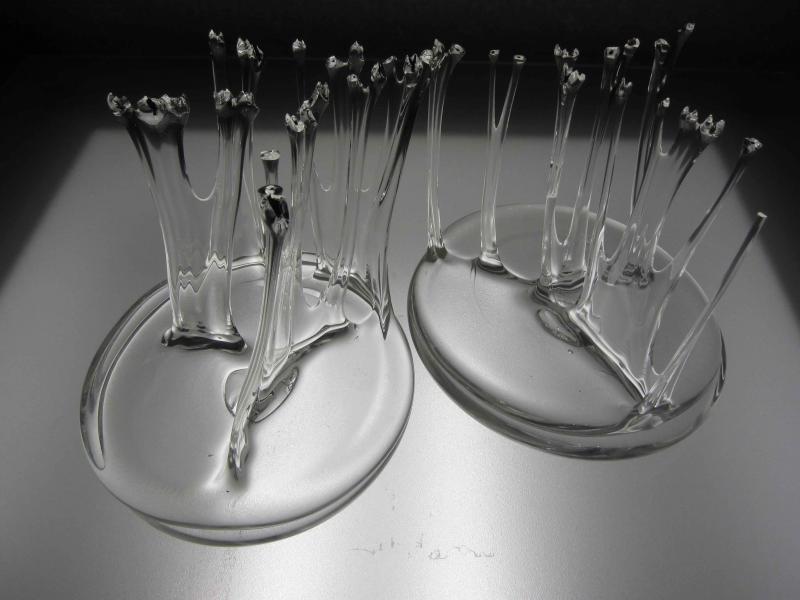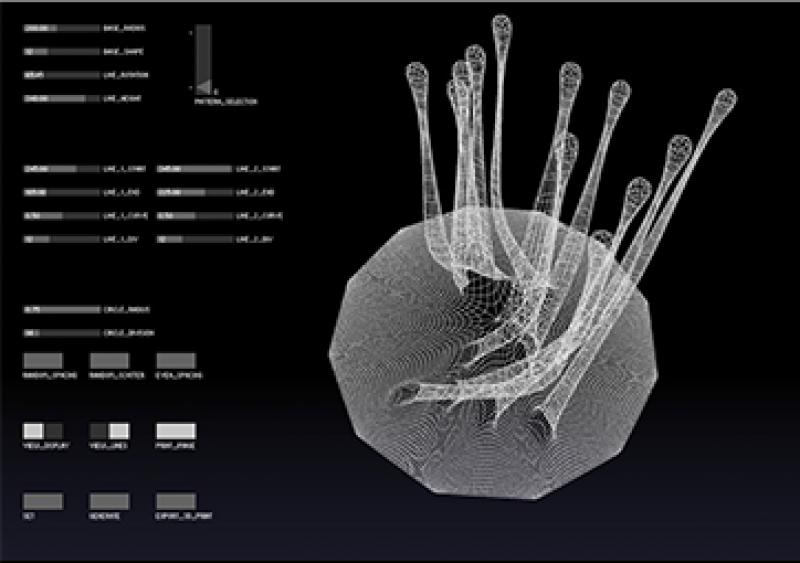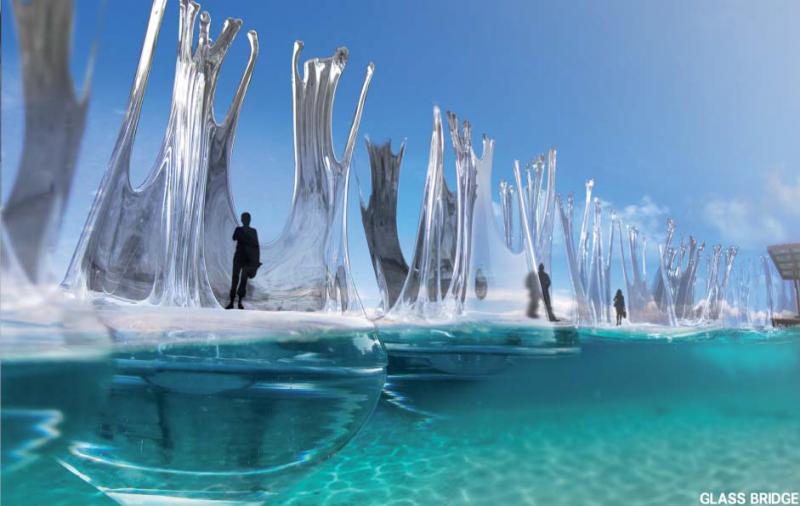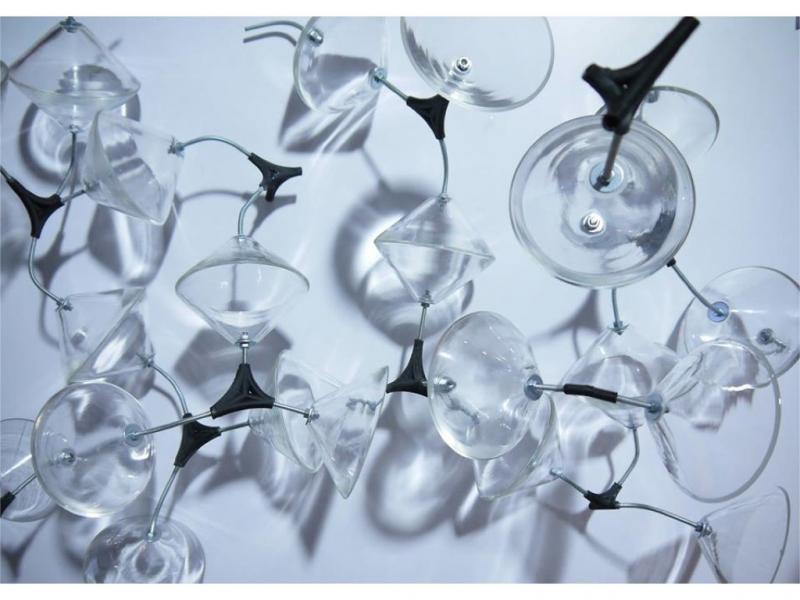Tittot Glass Art Museum & Tamkang University, Taipei
Generative-Glass is an experimental research programme designed to investigate the evolving role of glass as a physical material in design and art, and it’s potential relationship with new computational/interactive media processes. Glass is a highly expressive material mainly due to its richness in optical effects and its variable means of color differentiation. At the same time, glass, unlike most architectural materials, is also relatively less ‘accessible’ and ‘manageable’ due to various factors directly associated with glass making, construction and fabrication processes. Generative-Glass, held at Taipei’s Tittot Glass Art Museum, sets out to successively produce a body of work demonstrating, in collaboration with both contemporary glass manufacturers and artisans, ways in which the implementation of glass as a highly aesthetical material could be harnessed computationally and spatially at a 1:1 scale in the form of an art installation exhibition.
Taipei:
Unlike glass art in the West, ancient Chinese glass art dates back to the 3rd century BC and has only recently re-emerged onto the international scene, most notably from Taiwan’s famous Tittot’s works, which introduces the ‘Lost Wax Castings’ technique into the crafting processes of glass. For this 1st cycle of the research program, we will explore the theme—Aggregated-Glass. We would attempt to relook at the highly laborious and small-scale process of Taiwanese glass art making and how such traditional processes could be re-implemented using state-of-the-art rapid prototyping techniques and industrial glass processes of digital fabrication. In addition to these, new advanced physical and digital modeling techniques would be utilized to explore ways in which the assembly and material articulation could be generated for our prototype.
Hands-on glass-blowing techniques led by tutors from Royal College of Art (RCA, London) would be counterpointed with advanced computational design techniques taught by tutors from the AA School and Zaha Hadid Architects (ZHA, London). Students would also participate in the various complementing events, including Taipei’s glass factory/art studio visits, symposium and lecture series by leading artists, designers, academics and professionals.
The programme is open to art, architecture and design students and professionals worldwide. Other applicants who are interested in glass making/design in general are also welcomed.

